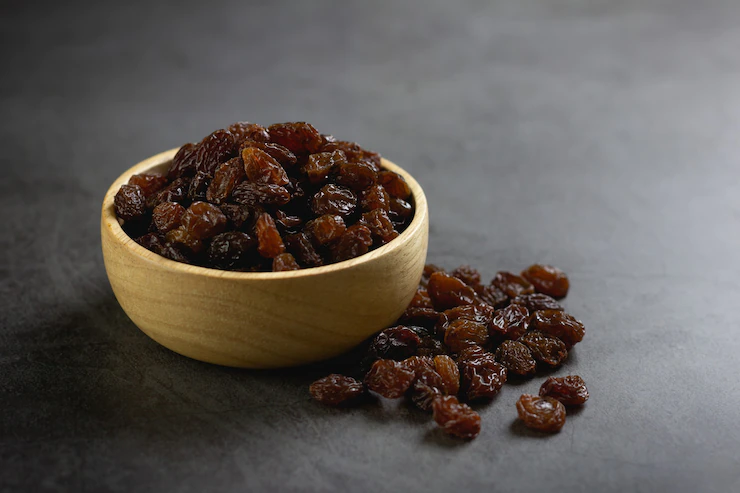Studies show that approximately half of all women experience some kind of sexual difficulty at one point in their lives—from lack of interest to problems with orgasm and everything in between. These issues can follow them outside of the bedroom, impacting their health, happiness, and relationships.
But it doesn’t have to be that way. In her new book Better Sex through Mindfulness (Greystone Books, April 2018), psychologist and sex researcher Dr. Lori Brotto offers a groundbreaking approach to increasing desire, arousal, and satisfaction. Her secret? Mindfulness. By practicing simple exercises daily for at least 4-8 weeks, she’s found that women from all walks of life can improve their sexual experiences, reduce sex-related distress, boost mood, and increase overall sexual satisfaction.

Ready to give it a try? In this special for Wellness magazine, Dr. Brotto offers a sneak peek from Better Sex through Mindfulness, just for you:
The Raisin: Eating Meditation for Better Sex
Whether you have never practiced mindfulness in your life or you have a regular meditation practice, I encourage you to try the following eating meditation now. You may choose to read through the following exercise in full before moving on to the practice. Alternatively, the Internet offers an assortment of free audioguides of the eating meditation, delivered in slightly different ways. For example, Bob Stahl has a YouTube video entitled “Raisin Meditation”* that you can use if you prefer to be guided through the instructions.
As you practice, it is likely that your mind will wander. This is not your fault, and it does not mean you are doing the exercise incorrectly. When this happens, you are encouraged to just notice this and gently bring your attention back to the raisin. There is as much mindfulness in noticing that your mind has wandered off somewhere away from the raisin as there is in continually paying attention to the raisin.
- Start by examining the object.
- Notice what details you can observe by looking at it.
- Notice the color of the object, studying its texture.
- Become aware of the details on the object’s surface, patches of light and dark, reflections, and the sensation of it lightly resting on the palm of the hand.
- Study the object intently.
- Touch the object with a finger. Is it rough or smooth? Thick or thin? Hard or soft?
- Notice the topography of the object. Look at the valleys and peaks.
- Feel the weight of the object, and how it feels in the hand.
- Pick the object up and touch it with a finger. Is it rough or smooth? Thick or thin? Hard or soft?
- Lift the object to the nose and smell it. Observe the beginning, middle, and end of the aroma. Move the object to the other nostril and observe the aroma there.
- Bring the object to one ear and roll it between the fingers. Notice any sounds.
- Bring the object to the lips and rest it against the lips. Let the lips feel what it feels like. Notice if your attention has moved to a thought about the object or anticipation of eating it. Allow this thought to be the new focus of attention until it fades away. Then return your attention to sensations in the body associated with the object.
- Perhaps notice saliva building in the mouth. Bring a friendly interest to the various sensations as they arise, unfold, and fade away.
- Place the object in the mouth, on the tongue, without chewing it.
- Close the eyes and notice how it feels.
- Focus on how it feels on the tongue.
- Place the object between the teeth, without chewing it, and feel what it feels like between the teeth.
- When you are ready, begin to chew the object slowly and thoroughly, focusing on its taste and texture.
- Feel the teeth biting through the surface and taste the juice flowing over the tongue and mouth.
- Notice the trajectory of the flavor as it bursts forth, the flood of saliva, how the flavor changes.
- Notice the contraction of the muscles in the jaw when chewing.
- When you’re ready, swallow the object and observe the sensations of it passing down the throat.
- Notice the sensations in the mouth, the taste, and texture.
- Whenever some other object, such as a physical sensation in another area of the body, a sound, or a thought becomes predominant, momentarily take this to be the new focus for attention and bring the same level of mindful awareness to that sensation, sound, or thought, continuing to observe it until it is no longer predominant. Then bring your attention back to the object.
- And whenever you’re ready, allow the eyes to open if they have been closed.
You can then move through … three levels of inquiry. First, what physical sensations did you notice? What other sensations were you aware of? Could you describe those sensations in even more detail? How long did those sensations last? How did you know the taste was sweet? What part of the tongue tasted sweetness? Did it stay the same over time or did it shift in any way? If so, in what way? Did you notice an impulse or urge to chew? If so, how did you first notice that impulse/urge? How did you become aware of it?
Next, consider how being aware of a raisin in this way is different from how you normally interact with (that is, consume) raisins. Specifically, how was paying attention to eating a raisin in this way different from how you might normally eat a raisin?
Finally, consider how this exercise might be relevant to your own experience of sexuality. What was it like to focus intently on sensation moment by moment? Did you observe anything about the process of paying attention that could be relevant to sex? If you experienced some salivation while the raisin was in your mouth before you began chewing, could this teach you anything about your own anticipation of sex? Do you anticipate certain outcomes of events before they even happen? Do you anticipate disastrous outcomes from sex with a partner, such as a lack of your own response or negativity from a partner’s response? How might observing the link between expecting to chew the raisin and the mouth’s salivation in anticipation of chewing be relevant to how you anticipate events in your own life?
Excerpted from Better Sex through Mindfulness: How Women Can Cultivate Desire by Lori A. Brotto, PhD (Greystone Books, April 2018). Adapted and reproduced with permission
About author
Dr. Lori Brotto is a Professor in the UBC Department of Obstetrics and Gynaecology, and a Registered Psychologist in Vancouver, Canada. She is the Executive Director of the Women’s Health Research Institute of BC located at BC Women’s Hospital. Dr. Brotto holds a Canada Research Chair in Women’s Sexual Health. She is the director of the UBC Sexual Health Laboratory where research primarily focuses on developing and testing psychological and mindfulness-based interventions for women with sexual desire and arousal difficulties and women with chronic genital pain. Dr. Brotto is an Associate Editor for the Archives of Sexual Behavior, has 150 peer-reviewed publications, is the Sexual Health expert writer for the Globe and Mail, and is frequently featured in the media on topics related to sexuality.



